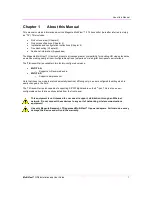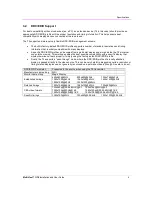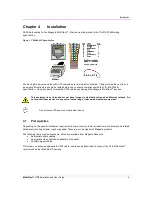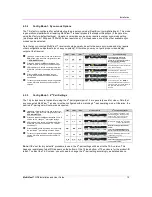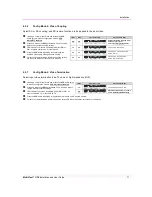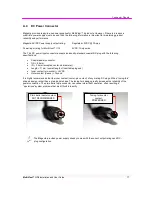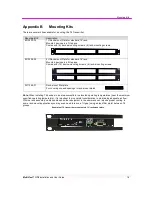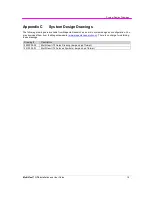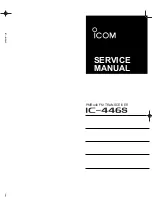
Specifications
MultiView™ II T4 Installation and User Guide
4
3.2
DDC/EDID Support
For best compatibility with source devices (ex: a PC), an extension device (T4 in this case) should provide an
appropriate DDC/EDID profile with the proper resolution and timing information. This helps ensure best
compatibility with display devices connected at the remote end.
The T4 supports a simple yet very flexible DDC/EDID management scheme:
•
The built-in factory-default DDC/EDID profile supports a number of standard resolutions and timing
information that is widely compatible with many displays.
•
A specific DDC/EDID profile can be copied from a particular display and stored inside the T4’s internal
non-volatile memory. This method enables the best possible compatibility with a specific display that
would otherwise not work properly if simply using the factory-default DDC/EDID profile.
•
Finally, the T4 supports a “pass-through” mode, where the DDC/EDID profile of a locally attached
display is passed directly to the video source. This can be very helpful in diagnosing certain resolution or
timing related display issues, but generally is not used on a permanent basis (though it is safe to do so).
DDC/EDID Parameter:
Presented to the source when using the T4 transmitter:
Manufacturer name string
MRI
Monitor name string
Magic Display
Established timings
640x480@60Hz
800x600@60Hz
1024x768@60Hz
1280x1024@60Hz
1360x768@60Hz
1600x1200@60Hz
1920x1080@60Hz
1920x1200@60Hz
Detailed timings
1920x1080@60Hz
1280x720@60Hz
720x480@60Hz
CEA video formats
720x480p@(59.94,60Hz)@4:3
720x576p@50Hz@4:3
1280x720p@50Hz@16:9
1280x720p@(59.94,60Hz)@16:9
1920x1080p@50Hz@16:9
1920x1080p@(59.94,60Hz)@16:9
Specific timings
1280x720@60Hz






